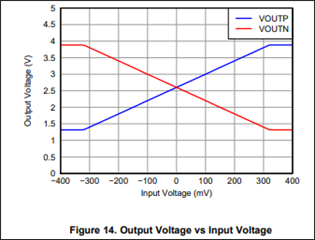Other Parts Discussed in Thread: AMC1200
I intend to measure the current ( 0.. 2 A ) of a converter driven 3-phase AC Motor
using a shunt of 0.1 Ohm connected to J2 ( IN1 ) on the board.
For VDD2 5.016 V DC are applied to J3.
For VDD1 the internal isolation transformer is used ( on JP1 pin2 and pin3 are connected ).
5Viso vs. high-voltage ground is then 5.019 V DC which seems to be correct.
For test purposes I applied different DC current values to the shunt in order to verify
the correct behaviour output vs. input.
I got the following strange results on J4 (OUT1 ).
( J4 is not connected to any load , pins are blank )
1) IN1 = 0.0 VDC (pins short-circuited ) :
expected voltage on J4 : +2.50 VDC ( specified offset )
measured voltage on J4 : +0.533 VDC
2) IN1 = +0.059 VDC
expected voltage on J4 : 2.50 + 8*0.059 = +2.97 VDC
measured voltage on J4 : -0.147 VDC
3) IN1 = +0.117 VDC
expected voltage on J4 : 2.50 + 8*0.117 = +3.436 VDC
measured voltage on J4 : +0.217 VDC
4) IN1 = +0.235 VDC
expected voltage on J4 : 2.50 + 8*0.235 = +4.38 VDC
measured voltage on J4 : + 0.915 VDC
Thus the offset is not equal to the specified value of +2.50 VDC.
The gain is not constant and not matching the specified value of 8.
What might be the reason for this strange behaviour ?
Best regards and thanks in advance
Gerhard Baumann


